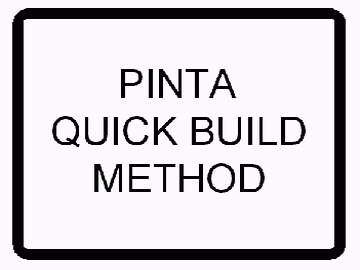Loading page header ... or Your browser does not support JavaScript
Building the 'Pinta' sailing dinghy:The animation shows the simplicity of building a chine dinghy in plywood. Construction uses the stitch and glue (or tack and tape) method. The complete port/starboard hull panels are made up on the bench and then assembled in a simple cradle. In the first picture you see the two hull panels already joined up loosely with wire ties along the keel and stem while lying flat on the building table. The next picture shows the hull panels placed vertically in the cradle and starting to open up. The following pictures show how the panels unfold fully to the shape of the boat. Some weights and spreaders are used in the process. Wire ties are added progressively to the chines. The transom is fitted last. The boat is completed by fitting bulkheads, daggerboard case, seats and gunnel. |
|
 |
In the prototype boat the hull panels were made up of separate bottom and topside panels that were joined near the stem by an epoxy/glass joint visible in the pictures. However, I have eliminated this joint in the revised design. The forward half of each hull panel is now cut out in one piece from a single sheet of ply. I had used this method successfully in my aluminum dinghy design back in 1983 and as this simplifies construction considerably by reducing the number of butt joints to two per hull side I have now incorporated this method in a few other single and multi chine designs. |
Next page
Top of Page
Loading first page footer ... or Your browser does not support JavaScript
Loading second page footer ... or Your browser does not support JavaScript